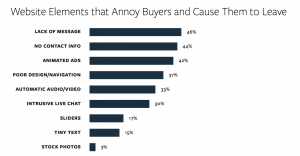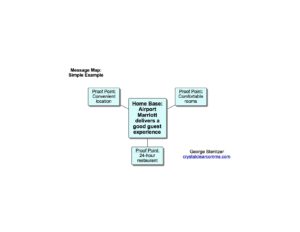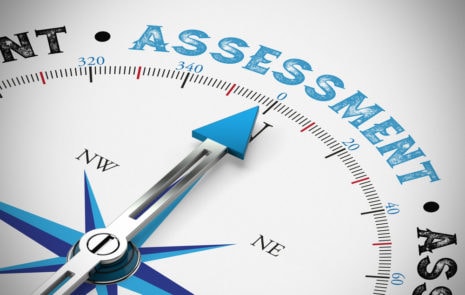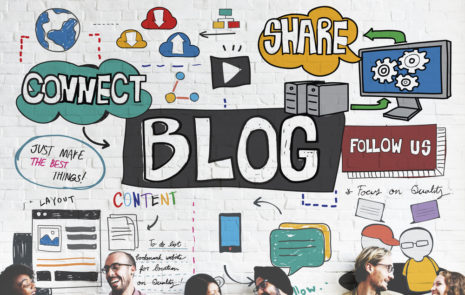
Content Marketers: What’s The #1 Reason Buyers Leave Websites?
Reason Buyers Leave Websites
Websites can repel users if they lack contact information, push animated ads, offer poor design and navigation, or startle with automatic audio and video. But in the eyes of website users, the #1 reason to leave a B2B website is the lack of a message.
Having a clear message on your website is key to success. That’s because buyers are always looking for content that answers their question: What’s in it for me?
Almost half of buyers (46%) are annoyed by B2B websites for their lack of a message. Other ways to annoy buyers include:

• No contact information (44%)
• Animated ads (42%)
• Poor design/navigation (37%)
• Automatic audio and video (33%)
• Intrusive live chat (30%).
The lack of a message ranks #1 in repelling users. This finding comes from the new 2015 B2B Web Usability Report. A survey of 262 managers, executives, CEOs, presidents, directors, VPs and others was fielded by Huff Industrial Marketing, KoMarketing and BuyerZone.
Granted, it’s tough to develop a unified message for any organization, small or large. Marketers face many obstacles to developing a clear, consistent and cohesive message.
Here are some common ways that companies put the mess into messaging:
• A lack of leadership focus on messaging
• A lack of agreement among executives on what the message is or which audience comes first
• A message so complicated that few can explain it or follow it
• Multiple conflicting messages from product, sales and services people, or from different geographies
• Business units each pushing their own message to the exclusion of others
• Self-centered messages that talk about the seller, not the customer
• In the absence of a message, people who just make stuff up.
Do any of these symptoms sound familiar to you?
No organization is exempt from messaging problems. I’ve seen problematic messaging in start-ups, private companies, government entities and nonprofits, even Fortune 500 and Fortune 50 companies.
That’s why we developed a tool called 1-page Message Maps to simplify, clarify and amplify your message. Message Maps give you, your executives, marketers, sales and service people a simple, intuitive tool to keep everyone on message.
With a consistent message, customers know why they want to visit your website, consume your content, and maybe go down the path to a purchase.
To be effective, content marketers need a unified message that is agreed on by executives, product developers, sales, and marketing. That message needs to convey clear benefits, differentiate from competitors, and back up claims with facts, figures and case history.
A Message Map workshop catalyzes your messaging by getting the whole team on the same page quickly. When marketing, sales and executives need to tell a consistent story about what’s in it for customers, it’s time for a Message Map.
With a Message Map in hand, content marketers find it easier to develop websites, blogs, articles, white papers, social media posts, video, podcasts – you name it. Message Maps also streamline the review process, since the message has already been agreed on in advance.
Message maps grow even stronger when they’re sharpened with insights from buyer persona research. Buyers know best what they need during each step in the buying journey, whose messages they believe and whose they don’t, and which content most influences their buying decisions.
Develop buyer personas with input from sales people, service people and, most important, one-on-one customer interviews. Creating buyer personas will make your message even stronger, by immunizing it against buyer disbelief and understanding how the world looks through your customers’ eyes.
With a 1-page Message Map, you can clearly convey customer benefits, in a simple message of 7 seconds, 23 words or less – which fits even the short American attention span, now clocked at 8 seconds.

For example, here’s a unified message for an Airport Marriott that’s only 19 words long. Can you tell your company’s story this simply?
Once you have a solid 7-second message, you have a great email subject line, headline, Tweet or elevator speech. As you earn customers’ attention, you can ladder up to longer pieces of content that demand more time – such as 2 minutes, 5 minutes, 20 minutes or even 4 hours.
While an airport hotel’s story is relatively easy to tell, many B2B products and services require substantially more depth and detail as in the Tellabs Optical LAN message map.

Once your Message Map is created, you can color-code it to address different buyer personas. For example, Tellabs needed to address economic, technical and green buyers for its Optical LAN. This message map example shows which parts of the message resonate with economic buyers.
With your Message Map in hand, it’s easier to answer buyers’ crucial questions during the buying journey, such as:
• Why do I need to make a change now?
• What are the risks and hidden costs of sticking with the status quo?
• Which options should I consider?
• What’s the best way to compare the options?
• Who are other customers that have used this solution successfully?
• Where’s the proof the seller will deliver?
What your buyers are really looking for is a message that says what’s in it for them. With a message map, you can deliver the goods consistently. If buyers don’t find a useful message, they quickly exit your website.
Keep buyers coming back to you as they become more and more educated. With a Message Map, you’ll always deliver an on-target message, which makes it far easier to create content marketing that leads buyers to a purchase.
Related Posts
How do you assess your content marketing effectiveness?
Assess content marketing effectiveness 4 ways A marketer from New York Life Insurance asked this question in our content marketing workshop, “How do you...
Naming a new product? Read these tips.
Naming a new product can be frustrating and emotional. Why? Because the person or team who invented the product often feels very attached to...
Top 100 Content Marketing Question: How can you gain blog subscribers through your content?
To gain blog subscribers, you can: Maximize content value. Minimize user effort. Increase currency and urgency. Create anticipation. Here’s how: 1. Maximize content value...
The Wrong Words End Careers
Even the world’s most powerful people can hang themselves with the wrong words. Just 5 words felled BP CEO Tony Hayward. When a leader’s message...





